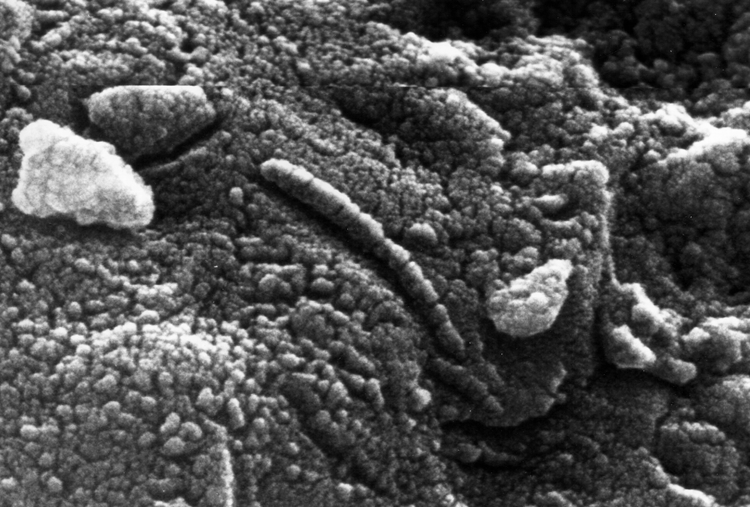 Meteorite ALH
84001 (image
by NASA)
|
Exploring the Potential for Life on
Another Planet For
centuries, humanity has wondered if we are alone in
the universe. From accounts of men in ships in the sky
in the Middle Ages to the UFO phenomenon, we have been
fascinated by the idea of extraterrestrial life. We
can now begin to test the idea that other worlds
contain life.
In 1976, NASA landed two identical landers on the Martian surface with four experimental suites to test for life. Three of the tests came back negative, but one test was positive for both, though they were in very different locations on the surface (Chambers, 1999). Subsequent research revealed possible scenarios that would not require life in order to get positive test results, but there was no way to know. In 1996, NASA researchers suggested they had discovered microbial fossils and their "tracks" in a meteorite originating from Mars (Choi, 2019). The evidence is still inconclusive as to whether or not the small tube-like structures interpreted as fossils really were ancient Martian microbes. Though it is possible that abiotic, natural processes could have formed these structures, they could just as likely have been formed from life. There is only one way to conclusively determine the likelihood of life on Mars. We must send humans there, and perform experiments in situ. |